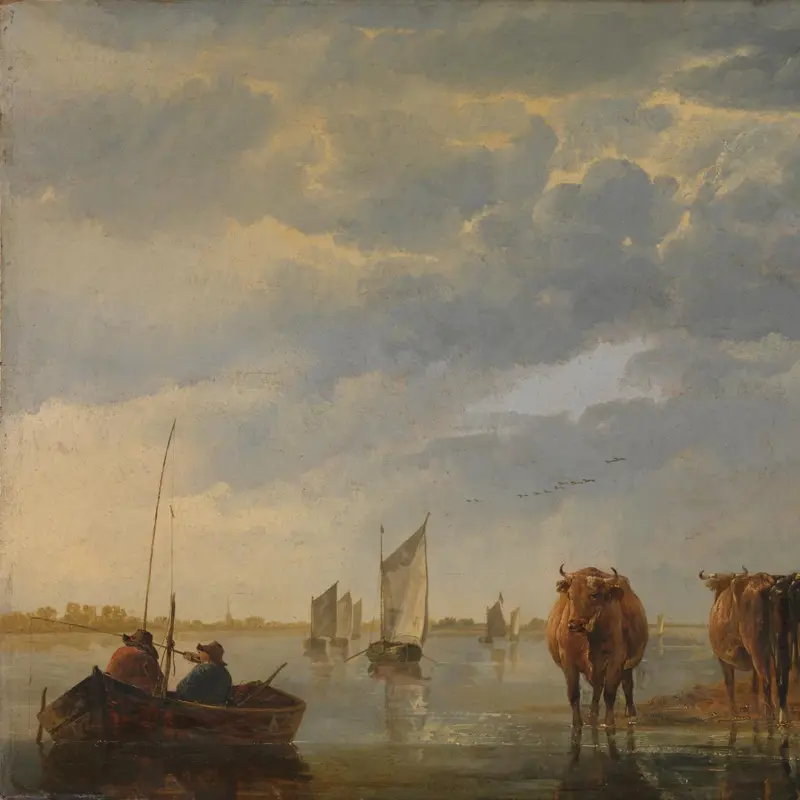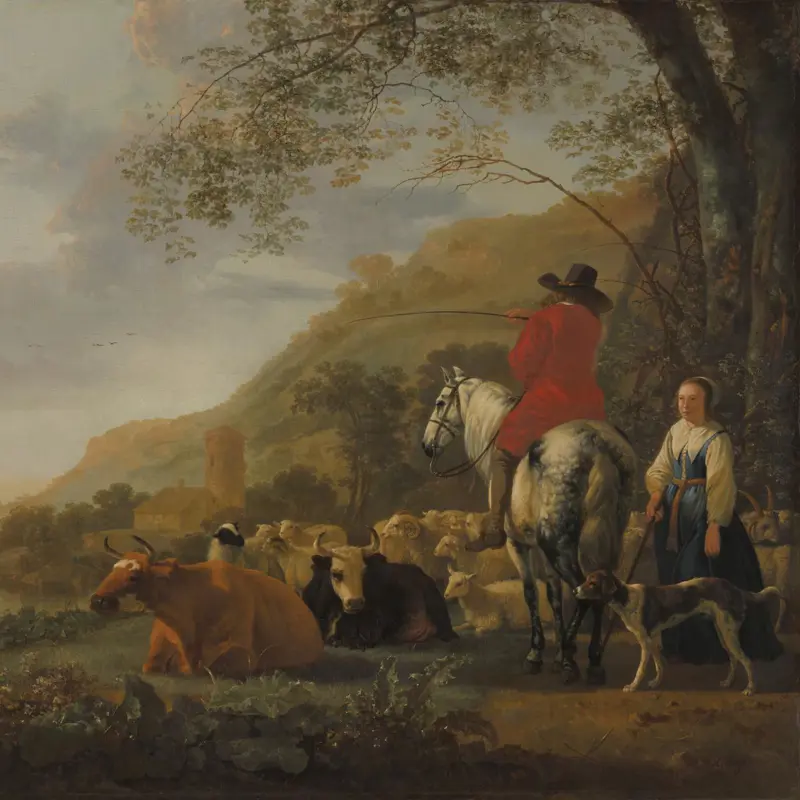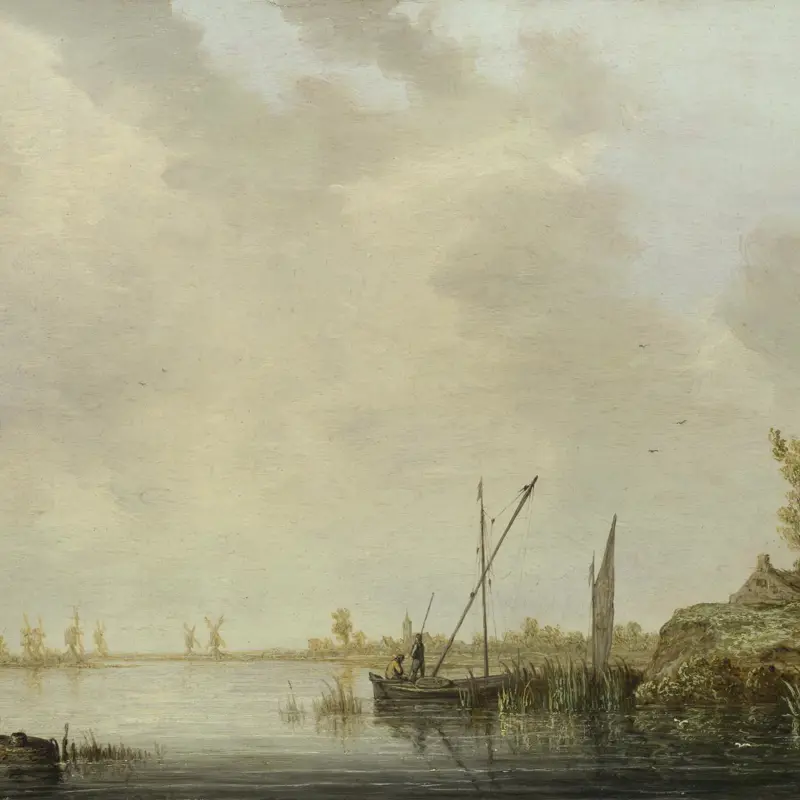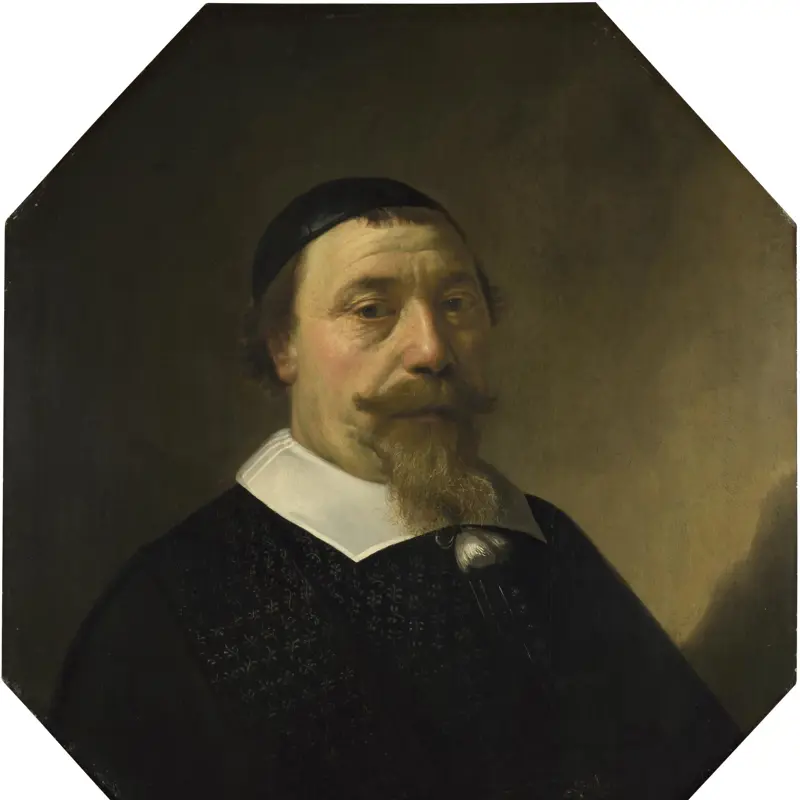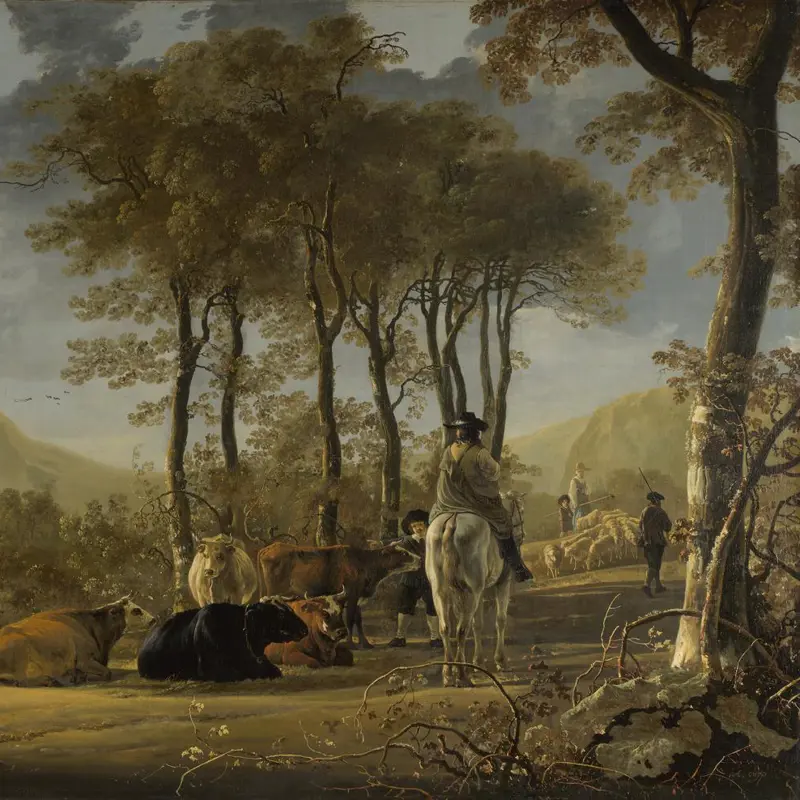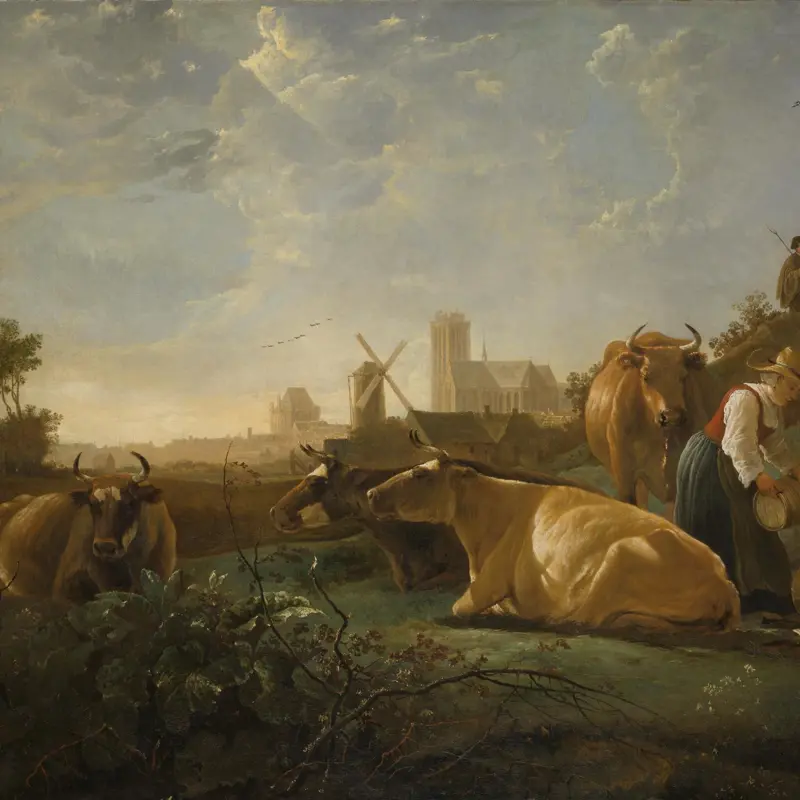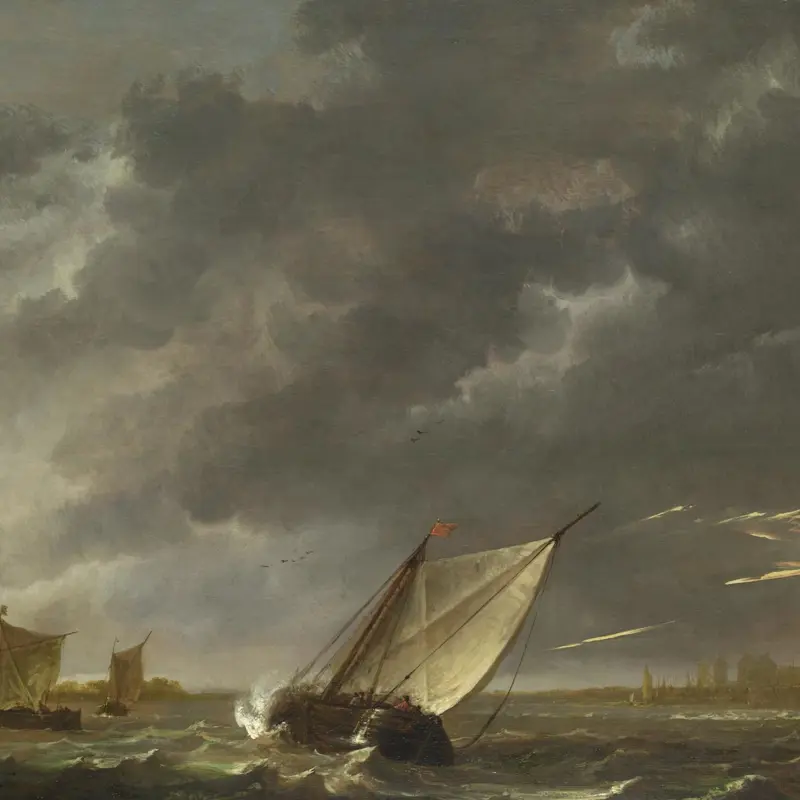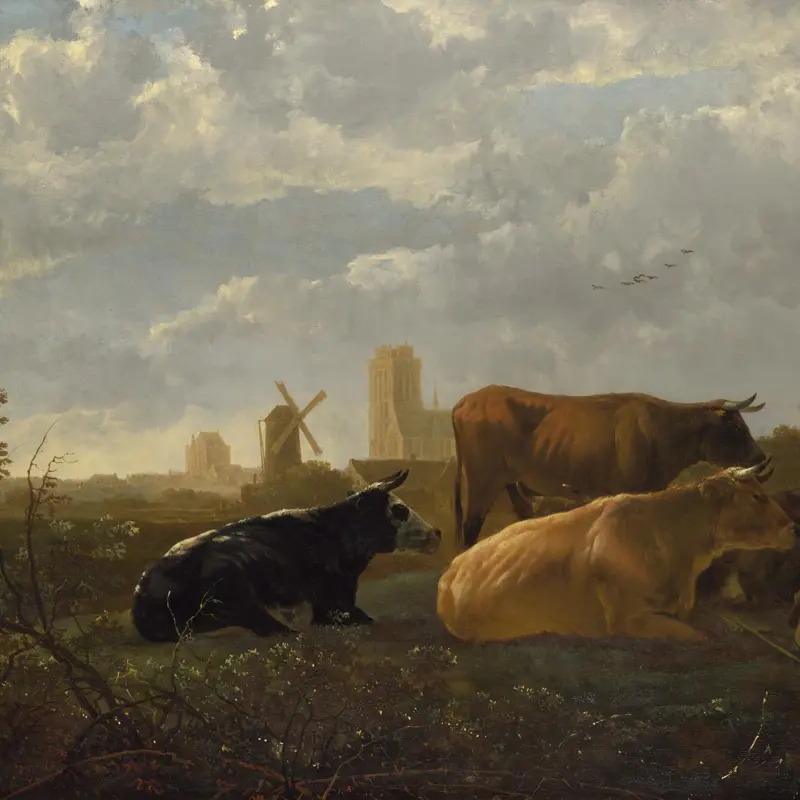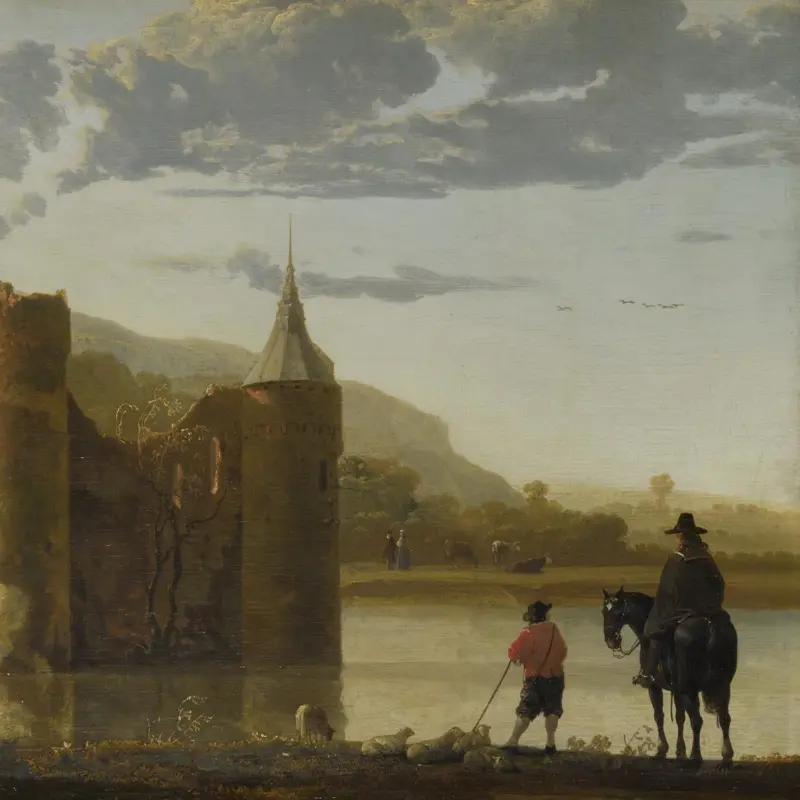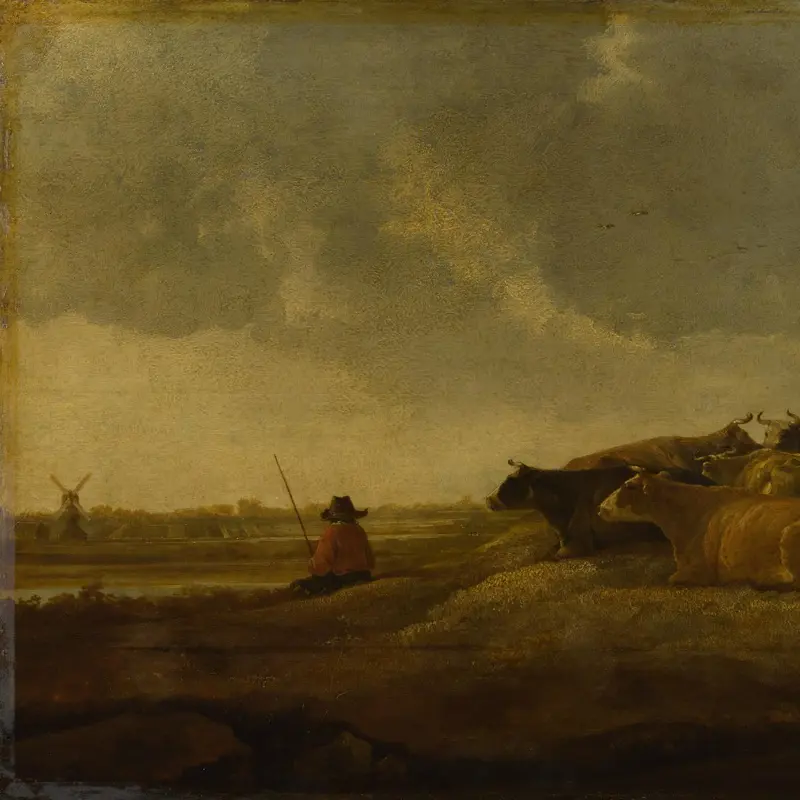Aelbert Cuyp, 'Peasants and Cattle by the River Merwede', about 1658-60
About the work
Overview
It is the animals which take centre stage in this picture. On a grassy riverside knoll, four cows and a magnificent jet black horse are spotlit by the warm afternoon sun. Aelbert Cuyp was a brilliant painter of these beasts, especially cattle. He knew exactly how to convey their languor and ponderous bearing, how the light would catch their heavy, rippling hides and the tufted fringes on the powerful ridgeline of their backs. He often repeated the same postures in his paintings.
There are several reasons why cows feature so prominently in Cuyp’s pictures. The seventeenth century had seen increasing reclamation of grazing land, especially around Dordrecht, Cuyp’s home town; many of his clients would have had an interest in dairy farming or have owned land and property in the countryside near the city. The ruined castle on the horizon confirms the location – it is the castle of Merwede, about a mile to the east of Dordrecht.
Key facts
Details
- Full title
- Peasants and Cattle by the River Merwede
- Artist
- Aelbert Cuyp
- Artist dates
- 1620 - 1691
- Date made
- about 1658-60
- Medium and support
- oil on wood
- Dimensions
- 38.1 × 50.8 cm
- Inscription summary
- Signed
- Acquisition credit
- Bequeathed by John Staniforth Beckett, 1889
- Inventory number
- NG1289
- Location
- On loan: Long Loan to the Mauritshuis (2023-2026), Mauritshuis, The Hague, Netherlands
- Collection
- Main Collection
Provenance
Additional information
Text extracted from the ‘Provenance’ section of the catalogue entry in Neil MacLaren, revised and expanded by Christopher Brown, ‘National Gallery Catalogues: The Dutch School: 1600–1900’, London 1991; for further information, see the full catalogue entry.
Exhibition history
-
2007Long Loan to the Mauritshuis (2007 - 2012)Mauritshuis1 May 2007 - 1 May 2012
-
2012Long Loan to the Gemeentemuseum (2012 - 2014)Kunstmuseum Den Haag20 April 2012 - 20 July 2014
-
2014Long Loan to the Mauritshuis (2014 - 2017)Mauritshuis6 May 2014 - 5 May 2017
-
2019Long Loan to the Mauritshuis (2019 - 2023)Mauritshuis1 January 2019 - 31 January 2023
-
2023Long Loan to the Mauritshuis (2023-2026)Mauritshuis1 February 2023 - 31 January 2026
Bibliography
-
1829
J. Smith, A Catalogue Raisonné of the Works of the Most Eminent Dutch, Flemish, and French Painters: In Which is Included a Short Biographical Notice of the Artists, with a Copious Description of Their Principal Pictures […], 9 vols, London 1829-1842
-
1907C. Hofstede de Groot, Catalogue Raisonné of the Works of the Most Eminent Dutch Painters of the Seventeenth Century, 10 vols, London 1907
-
1907C. Hofstede de Groot, Catalogue Raisonné of the Works of the Most Eminent Dutch Painters of the Seventeenth Century, 10 vols, London 1907
-
1960Maclaren, Neil, National Gallery Catalogues: The Dutch School, 2 vols, London 1960
-
1968C. Duits, 'A Landscape by Aelbert Cuyp', Duits Quarterly, 12, 1968, pp. 3-7
-
1973S. Reiss, Aelbert Cuyp in British Collections (exh. cat. The National Gallery, 3 January - 11 February 1973), London 1973
-
1975S. Reiss, Aelbert Cuyp, London 1975
-
1991Maclaren, Neil, revised by Christopher Brown, National Gallery Catalogues: The Dutch School, 1600-1900, 2nd edn (revised and expanded), 2 vols, London 1991
-
1991P. Schoon, Aelbert Cuyp 1620-1691, Dordrecht 1991
-
1992A. Chong, Aelbert Cuyp and the Meanings of Landscape, Phd Thesis, New York University 1992
-
2001
C. Baker and T. Henry, The National Gallery: Complete Illustrated Catalogue, London 2001
About this record
If you know more about this work or have spotted an error, please contact us. Please note that exhibition histories are listed from 2009 onwards. Bibliographies may not be complete; more comprehensive information is available in the National Gallery Library.

